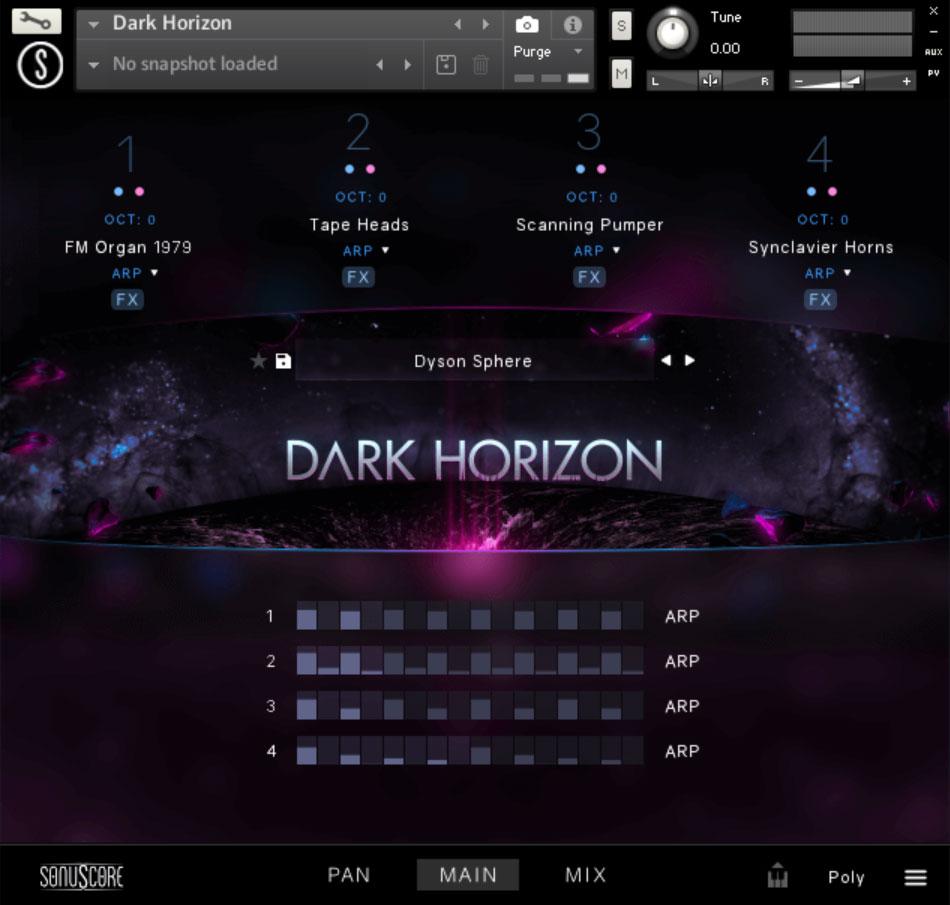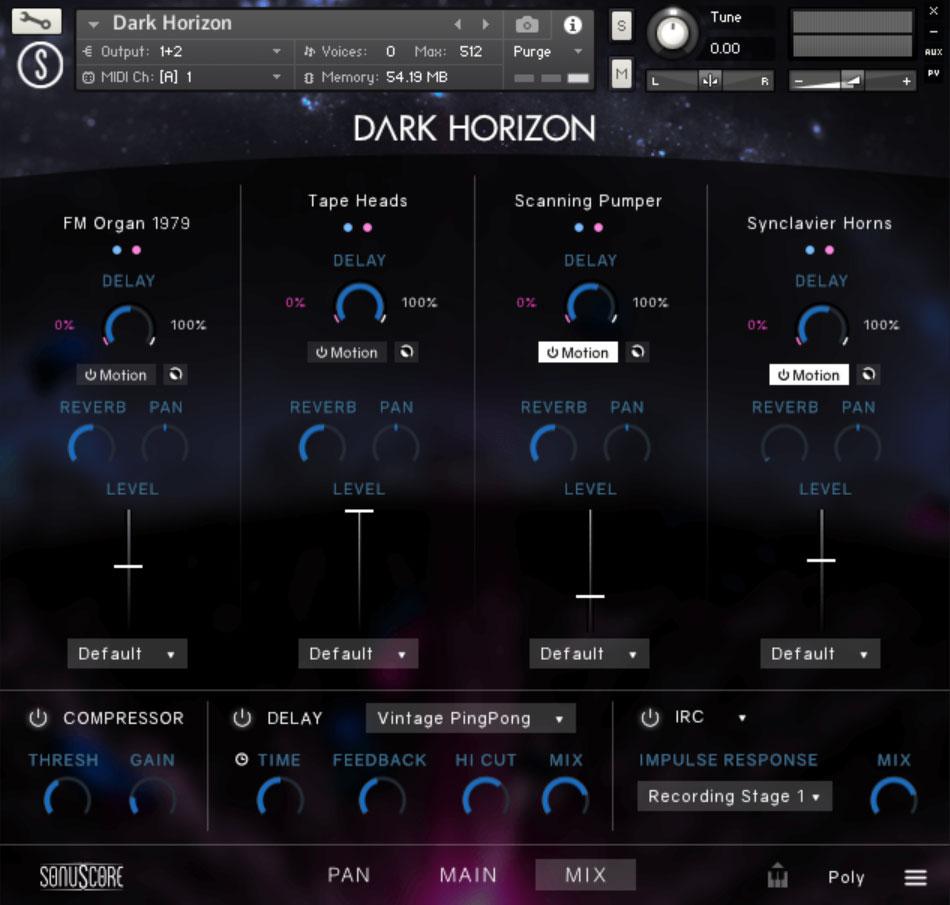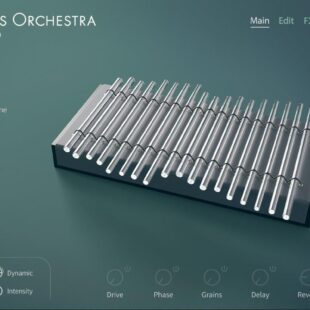Best Service Dark Horizon, by Sonuscore – The Sub-Bass Brute
Welcome to Music Nation TV! One of our all-time top-rated reviews continues to be Sonscores The Orchestra, and we continue to be impressed by the ongoing support, updates, and related expansions for the ‘Orchestra Family’. The latest addition, Dark Horizon, aims to expand on Elysion’s footprint and enhance its engine with grit and sub-bass elements.
Dark Horizon is a stand-alone Kontakt library designed to complement the ‘The Orchestra’ family of instruments. Currently, this comprises The Orchestra 1-3, Winter Strings, Horns of Hell, Woods of the Wild, Elysion, and Dark Horizon.
While each library is independent, they exhibit a noticeable synergy that complements one another, resulting in a rich and intricate musical palette. As the name implies, the new Dark Horizon expansion aims to introduce a darker, more cinematic sound texture.
Getting started
Dark Horizon is a Kontakt-based library requiring either the free or pro version installed and a simple installation via Native Access. The library weighs in at a poultry 1.2 gigabytes, reflecting the fast download and snappy load times of patches.
Dark Horizon utilizes the same base engine as Elysion, offering familiar workflows for existing users. The instrument has a slight variation, being centred around a four-way arpeggiator and making clever use of modulation wheel dynamics to influence movement and effect levels.
While Dark Horizon can certainly be free-standing on its own or as part of a layered synth or library, its intended function is to support and provide darker, sub-bass and gritty textures and arpeggios for the Orchestra ‘family’. The patches are clearly designed to slot in or syncopate with other titles in the family.
The Workflow
The Dark Horizons patch browser is categorized into five distinct groups: Playable Sounds, Lowest Texture, Mono Arpeggios, Rhythmic Pulses and Poly Animations. I noticed that these categories play a significant role when integrating Dark Horizon with Elysion and The Orchestra. On their own, they don’t have a significant impact as the preset patches are quite uniform.
When used in conjunction with Elysion and The Orchestra, the patch categories demonstrate how Dark Horizon can embellish and enhance. For example, Rhythmic Pulses pair well with softer pads from Elysion or long ensemble string sections from The Orchestra. I found that listening to what was lacking in The Orchestra and then searching for the appropriate patch in the most relevant category worked effectively.
Each patch can accommodate up to four discrete instrument slots, each is further organized into four libraries, loosely defining their sound quality. The ‘Dirt Bikes’ directory is the most perplexing, while the others align more closely with their respective content.
A series of basic controls are available to set levels between minimum and maximum effect levels, octave switching and the likes. Alongside the twin arpeggiator controls, a single mod wheel can adjust multiple controls simultaneously. Each sample player is equipped with individual FX, motion, and routing controls.
The cool centre graphic changes for visual feedback between cool blue and intense pink as you increase the mod wheel dynamics.
The main page displays the four instrument slots, the theme browser and a dedicated lane for each instrument modifier. These lanes can either be empty, resulting in a static or playable melodic sound, or they can represent motion sequences (ARP) or amplitude with swelling decay (ENV).
On the Pan page you can set motion sequencing for each of the twin pan engines, assigning any of the four instrument slots as you need. The Mix page features typical controls for levels, effects, and output options.
Kontakt displays a virtual piano keyboard showing the playable range in blue, with the suggested best playable range in green.
Lastly, a small collection of options covers MIDI drag’n’drop, mono or polyphonic operation, and CC controls.
Overall, it offers a highly featured and potentially complex workflow that does not feel overly cumbersome or obstructive.
The Sound
As its name implies, Dark Horizon introduces a dark, gritty, and dystopian sonic dimension to Elysion’s predominantly textural and pad-like soundscape, as well as to The Orchestra’s typically traditional arrangements.
Although the Dark Horizon presets offer a nice and intriguing experience, there are numerous other synthesizers available that can achieve similar or even more impressive results for the same or a lesser cost. I found the library truly shines when integrated with the other instruments within The Orchestra family. Layering it with the already immense-sounding multis of The Orchestra undoubtedly enhances its impact, while subtlety pairing it with Elysion adds a nice, almost analogue-sounding second layer.
Running through the presets reveals a large amount of overdriven and mangled bass synthesis, almost all of the preset patches feature some degree of distortion even before the mod wheel is affected. Doing this always increases the grit, volume and saturation.
I found excellent results when combining Elysion as an underscore to The Orchestra, keeping both instruments’ levels slightly below the surface and then relying on increasing the dynamics to provide saturation to intensify the overall sound.
A large feature of the library is its multiple motion control functions, which on the whole work well and certainly bring life to the sound. This still results in a very repetitive sounding motion after a few minutes, so assigning manual MIDI control to parameters is essential for getting the most out of the presets.
The filters are particularly good for this. Assigning each to separate controls on my MIDI keyboard was a great way to manually add nice little moments of intensity or to flatten out the sound as needed. Also assigning CC mapping to the Crunch filter, tone and humorously titled ‘Balls’ filter further empowers you with tactile control.
The overall level of processing for each of the four instruments is impressive, from amp cabinets to very nice-sounding filter types, there’s more than enough to crunch and squash the sound as required.
Keeping it in the family
Enough can’t be saidabout the ability to synergize and seamlessly integrate Dark Horizon with other titles in the Orchestra family. This integration significantly elevates the entire collection above anything else in the market. Unfortunately, it also highlights a limitation of Kontakt’s core foundation—it doesn’t allow separate libraries to interact with each other as they should.
This limitation becomes apparent when attempting to create large multi-instrument layered patches; the functionality doesn’t perform as expected. Layering The Orchestra on top of Elysion, on top of Dark Horizon, produces a massive wall of sound. While impressive, it becomes largely uncontrollable because keyboard split and mod wheel control are shared across all instances, resulting in unpredictable outcomes.
Since certain notes can be set to cut off at various split points on the keyboard or assigned a hierarchy position (either played the lowest, highest or middle note in a chord), playing all instances at once leads to unpredictable sounds, depending on where you play on the keyboard.
The solution lies in running individual tracks with independent instances of each library, allowing for more dynamic control, especially when it comes to separating shared notes. The easy MIDI drag-and-drop feature simplifies the process immensely.
I found Dark Horizon excellent as an underscore sub-bass enhancer, adding good dimension and width when used carefully. It’s easy to overdo the sound, so exercising restraint is necessary based on your musical objectives. But generally, even on quite traditional orchestrations, I found Dark Horizon added a nice level of enhancement to the low end.
For trailer music producers looking for inspiration and expansion of their toolsets, there is a lot to be found here. Many of the presets are clearly targeting hybrid orchestral arrangements, with plenty of strong arpeggiated pulse patterns. While the mod wheel tends to mostly increase saturation, quite a large amount of scope is still available, ranging from very subtle to speaker-shaking intensity.
Performance
As a stand-alone device, Dark Horizon loads and plays smoothly. Hardly a skip was noticed during the review, thanks largely to the lightweight sample base and clever programming.
Performance can noticeably decrease once you start incorporating more instruments from the family. While The Orchestra is surprisingly efficient in terms of DPS requirements, Elysion is significantly more demanding and primarily contributes to the strain on your system resources.
However, on a sensible project with minimal other real-time instruments in operation, I found that layering the three was relatively conservative on DPS, usually hovering around 30-35% overall on my system (i5 3600 with 16GB RAM).
Conclusion
Dark Horizon is somewhat of an enigma, in that as part of the ‘family’ it performs an essential role as an expansion to Elysion, both in turn supporting and enhancing The Orchestra. However, as a free-standing synth there is little new to find here that will impress, considering the large number of similar prices titles on the market.
While I very much love the sound of Dark Horizon brings to the table when coupled with Elysion, I don’t think the list price warrents a casual purchase without already owning its stablemate.
The clear answer, of course, is to buy both.
While Dark Horizon can certianly shine as a big and shouty bass synthesizer, its best role serves more as a supporting enhancement rather than a standalone instrument, its presence should be more felt than heard. Definatly a worthy addition to the already impresive The Orchestra Family, and highly recommended for those looking to invest in the series.

Like the review? Shout us a cup of coffee!










